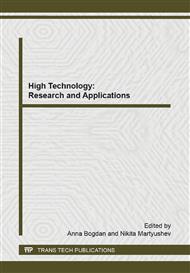p.933
p.937
p.943
p.949
p.954
p.959
p.965
p.969
p.975
Development of Fiber Optic Current Sensor
Abstract:
Current measuring high-precision methods and devices are one of the most important modern engineering development lines in optimal energy consumption sphere. However, there are a few small-sized instruments which allow conducting precision measurements without breaking the circuit. This paper presents information about conducted Faraday Effect research and general construction of the simple fiber optic current sensor (FOCS). Researched sensor conception is used in prototype which is developing by team of laboratory number 63 of National Research Tomsk Polytechnic University Nondestructive Testing Institute. Required tests and accuracy analysis were conducted. Research results confirm that fiber optic current sensors provide high-precision measurement and proposed methodic is effective.
Info:
Periodical:
Pages:
954-958
Citation:
Online since:
September 2014
Authors:
Keywords:
Price:
Сopyright:
© 2014 Trans Tech Publications Ltd. All Rights Reserved
Share:
Citation:


